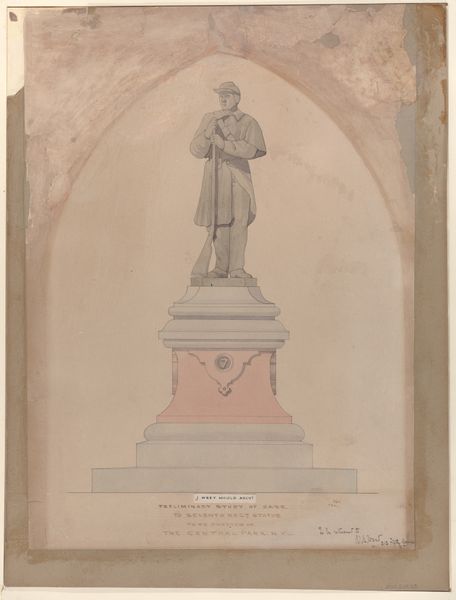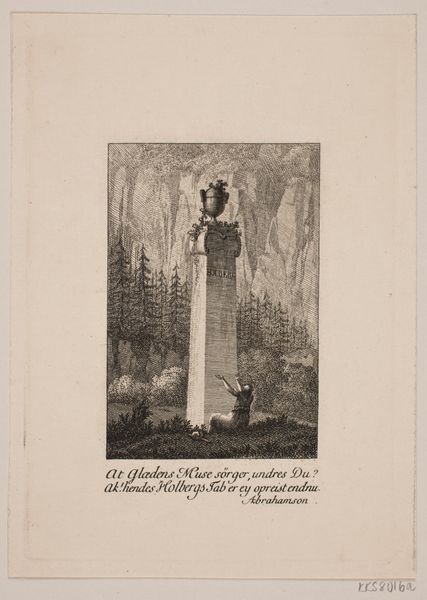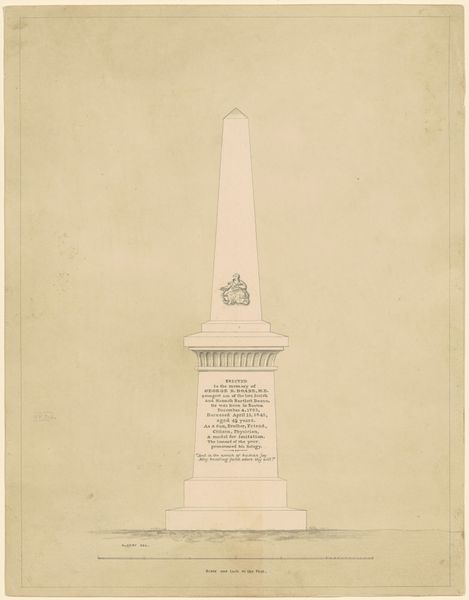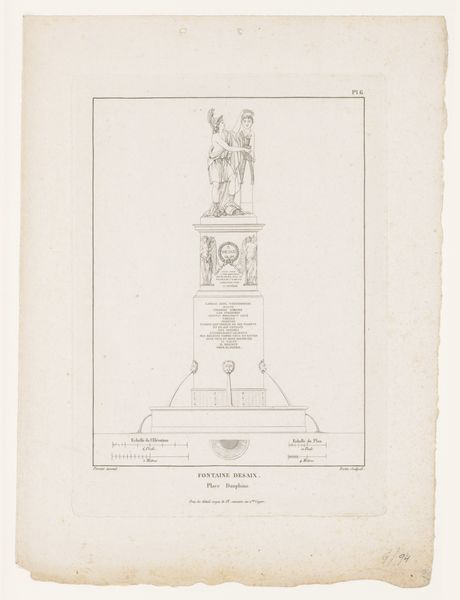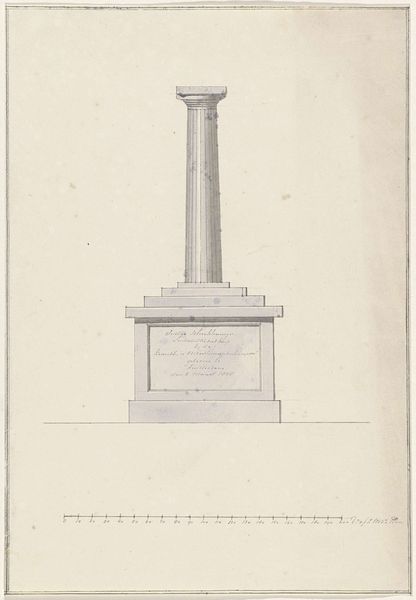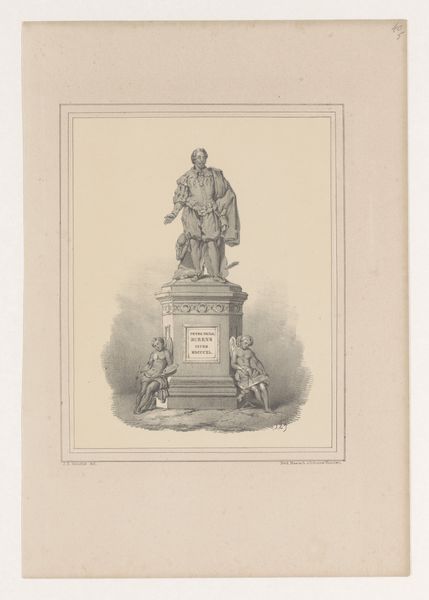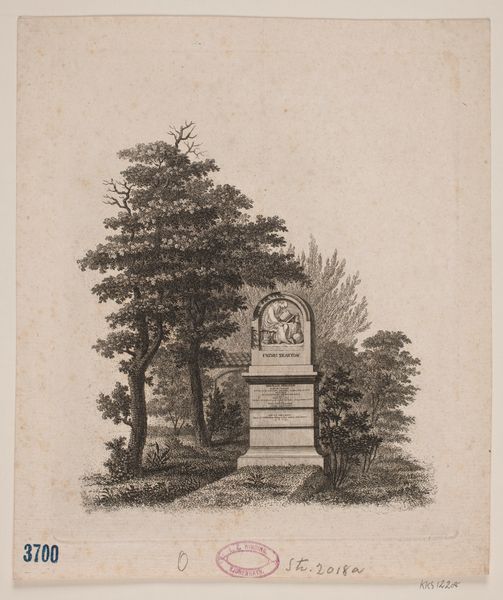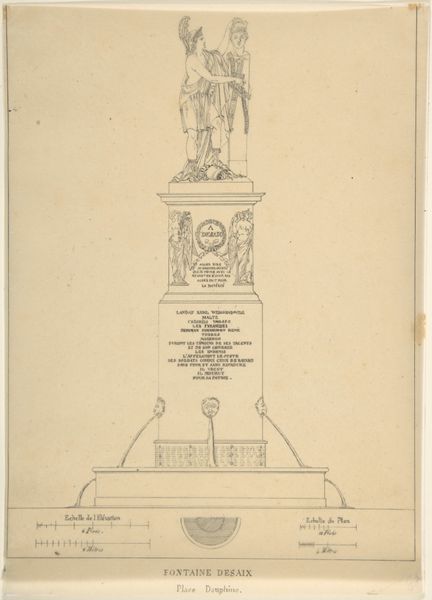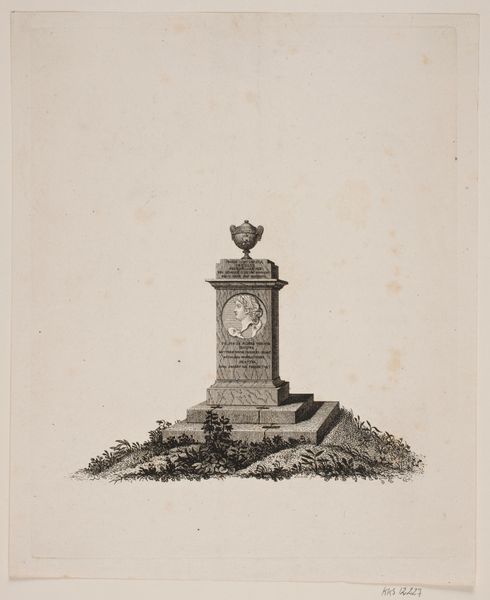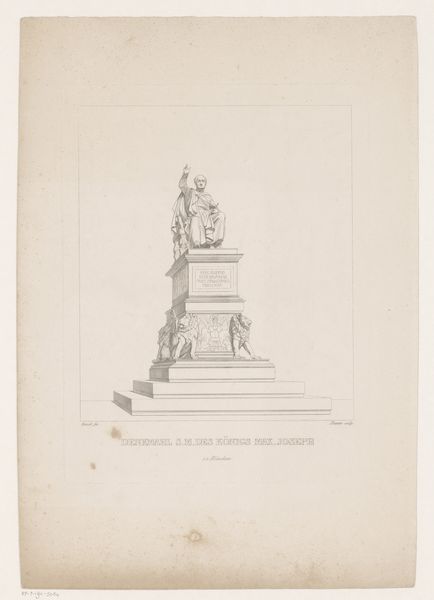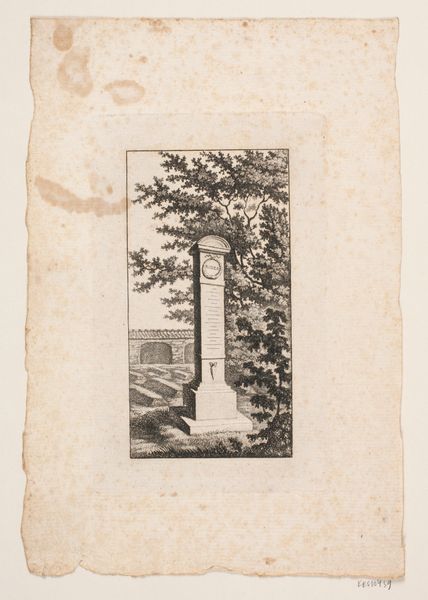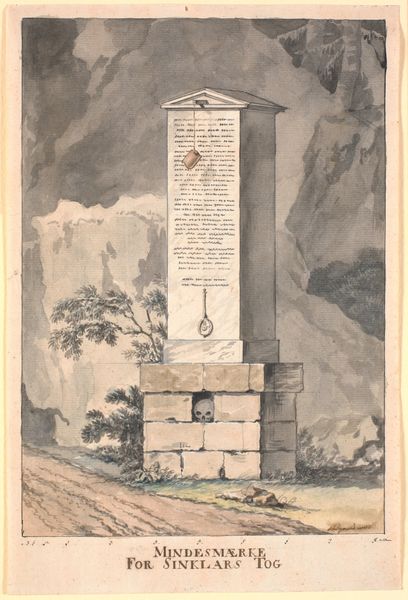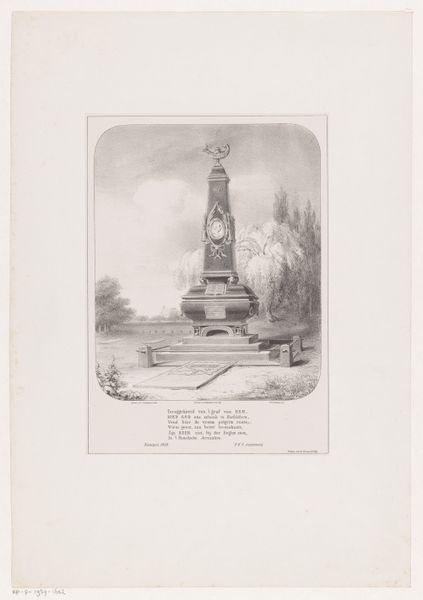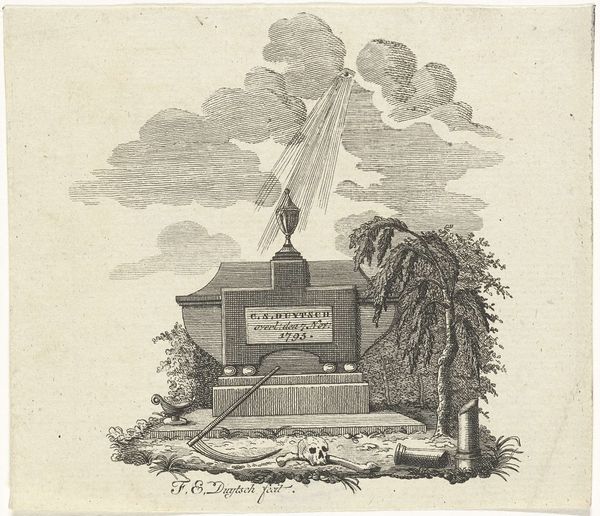
Design for a Tomb, Rothgeisser in Nuremberg (Elevation and Ground Plan) 1826
0:00
0:00
drawing, print, watercolor
#
drawing
#
neoclacissism
#
water colours
#
allegory
# print
#
landscape
#
watercolor
#
romanticism
#
history-painting
Dimensions: 28 7/8 x 16 1/8 in. (73.3 x 41 cm)
Copyright: Public Domain
This is a design for a tomb in Nuremberg by Johann Georg Dürschner, created some time in the 19th century with pen, ink, and watercolor. The tomb design reflects the neoclassical style popular at the time, with its symmetrical structure, restrained ornamentation, and the use of classical motifs like the urn on top. The weeping willow and the mourning figure are conventional symbols of grief, common in funerary art of the period. Nuremberg, Dürschner’s city, had a rich artistic tradition, with the Academy of Fine Arts playing a significant role in shaping artistic tastes. The design reflects the cultural values of the Biedermeier era, which emphasized domesticity, simplicity, and emotional sincerity, especially in the face of political repression after the Napoleonic Wars. This is evident in the intimate, personal nature of the tomb design. To fully understand this design, one might look at the records of the Nuremberg Academy, the history of funerary art in Germany, and the social history of the Biedermeier period. These resources help us to see the tomb not just as a design, but as a reflection of its time.
Comments
No comments
Be the first to comment and join the conversation on the ultimate creative platform.
